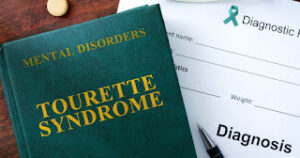Understanding Tourette’s Syndrome: Symptoms, Diagnosis, and Treatment
Tourette’s Syndrome (TS) is a neurological disorder characterized by repetitive, involuntary movements and vocalizations known as tics. It affects people of all ages, races, and genders, with symptoms typically appearing in childhood. In efforts to raise awareness and promote understanding, May 15 – June 15 is designated as Tourette’s Syndrome Awareness Month. Teal is the color chosen to symbolize this campaign, representing the support and advocacy for individuals living with TS.

Tourette’s Syndrome Awareness Month |
What is Tourette’s Syndrome?
Tourette’s Syndrome is a complex neurological disorder that manifests through involuntary movements and sounds known as tics. These tics can range from mild to severe and can change over time in frequency, type, and intensity.
What Month is Tourette’s Syndrome Awareness?
Tourette’s Syndrome Awareness Month takes place in May 15 – June 15. During this time, various organizations, healthcare professionals, and communities come together to educate the public about TS and provide resources for individuals and families affected by the condition.
What is the Color for Tourette’s Syndrome Awareness?
Teal is the designated color for Tourette’s Syndrome Awareness. Teal symbolizes unity, support, and advocacy for individuals affected by TS. During Tourette’s Syndrome Awareness Month and throughout the year, the teal ribbon serves as a visual reminder of the importance of raising awareness and fostering acceptance for those living with TS.
 |
| Tourette’s Syndrome Awareness Month 2025 |
What Causes Tourette’s Syndrome?
The exact cause of Tourette’s Syndrome is still unknown, but it is believed to involve a combination of genetic and environmental factors. Research suggests that abnormalities in certain brain regions and neurotransmitter imbalances may play a role in the development of TS.
First Signs of Tourette’s Syndrome
The first signs of Tourette’s Syndrome often appear during childhood, typically between the ages of 2 and 12 years old. Initial symptoms may include sudden, repetitive movements such as blinking, facial grimacing, or head jerking, as well as vocalizations like throat clearing, sniffing, or grunting.
How is Tourette’s Syndrome Diagnosed?
Diagnosing Tourette’s Syndrome involves a thorough medical evaluation by a healthcare professional. There is no specific test for TS, so the diagnosis is based on the presence of both motor and vocal tics that persist for at least one year, with symptoms appearing before the age of 18.
Tourette’s Syndrome Symptoms
Tourette’s Syndrome is characterized by both motor and vocal tics. Motor tics involve sudden, repetitive movements of the body, such as eye blinking, head jerking, shoulder shrugging, or limb movements. Vocal tics include involuntary sounds or utterances, such as throat clearing, grunting, sniffing, or repeating words or phrases.
Tourette’s Syndrome Treatment
While there is no cure for Tourette’s Syndrome, treatment aims to manage symptoms and improve quality of life. Therapeutic interventions may include behavioral therapy, medications to suppress tics or manage associated symptoms such as anxiety or ADHD, and support groups for individuals and families affected by TS.
Conclusion
Tourette’s Syndrome is a complex neurological disorder characterized by repetitive, involuntary movements and vocalizations known as tics. Tourette’s Syndrome Awareness Month, observed in June with a dedicated week from June 2-8, aims to raise awareness and promote acceptance and support for individuals living with TS. By understanding the symptoms, diagnosis, and treatment options available, we can better support those affected by Tourette’s Syndrome and work towards a more inclusive society.
